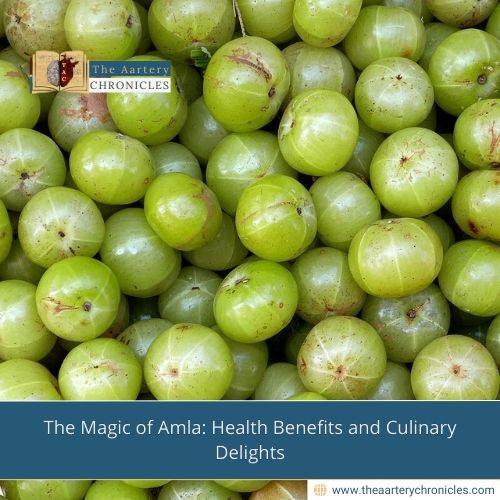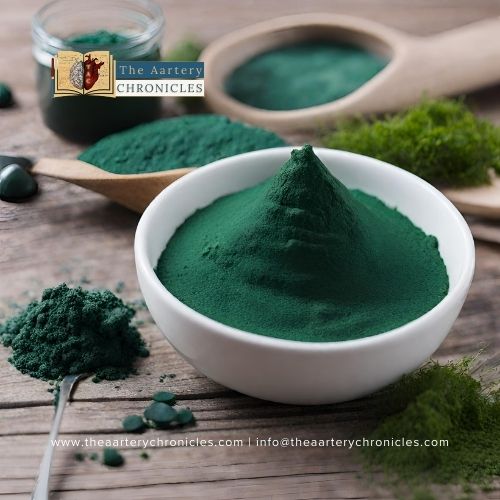

The Magic of Amla: Health Benefits and Culinary Delights
Introduction
Amla murabba(jam), amla aachar(pickle), amla candy, amla supari (dried amla with honey), masala amla (dried amla with spices sprinkled) … does this bring back memories ? You bet! These are all prepared with the amla fruit, so delicious!
Scientific Classification
Amla is also known as Indian Gooseberry, emblic, emblic myrobalan, Malacca tree, or amloki. It is famed for its medicinal properties and is jam-packed with healthy nutrients. It is widely used in Ayurveda, the ancient Indian medicine system.
The scientific classification of Amla is: Kingdom Plantae, Clade :Tracheophytes, Angiosperms, Eudicots, Rosids, Order Malpighiales, Family Phyllanthaceae, Genus Phyllanthus, Species P.emblica and has the binomial name Phyllanthus emblica.[1]
Global Presence
Amla is the fruit of a deciduous tree and is widely in tropical and southern Asia, Europe and Western Asia. Amla is produced in India, Sri Lanka, Indonesia, Philippines, Brazil, Vietnam, Papua New Guinea, Mexico, Malaysia, United Republic of Tanzania, Myanmar, Vanuatu, Solomon Islands, Ghana, Dominican Republic, Nigeria Mozambique, mainland China, Jamaica, to name a few.
India is the largest producer of Amla. In India, Uttar Pradesh is the topmost producer of amla (35% share) with Tamil Nadu in second place accounting for 14% share. Other states that produce amla are Madhya Pradesh, Rajasthan, Andhra Pradesh, Jharkhand, Chattisgarh, Haryana, Gujarat and Karnataka. The underlying factor is that amla can be grown in dry and barren land hence easy to grow. India exports amla to countries like the USA, Japan, Nepal, and Germany.
How to consume Amla
The amla fruit is greenish-yellow in colour. It can be eaten raw, as a whole. It has a tangy oil, curry leaves, green chillies and cumin seeds. Amla can be made as a sweet jam (murabba) with candied sugar. Amla can be dried and coated with honey/ spices for a delicious mouth freshener/candy. Drinking a glass of amla juice before meals keeps us satiated for longer durations. Amla powder can be sprinkled on salads, fruits, and smoothies to manage weight. Amla is available as a whole fruit, powder, juice, and supplement also. It is one of the core ingredients of an Ayurvedic tonic like Chyawanprash that boosts immunity and health.
Benefits of consuming Amla
Let us see the benefits of amla with its power packed nutrients.
1) Boosts immunity: Amla is very rich and loaded with large quantities of Vitamin C and antioxidants like polyphenols that strengthen our immune system and fight free radicals. Vitamin C induces the production of white blood cells that fight against infections and protect the white blood cells from damage.
Amla fights infections like colds and flu and strengthens our immunity.
2) Stress relief: Amla has high antioxidant properties that act as a shield and protect from oxidative stress, lowering the ageing process and risk of chronic ailments. Amla has a high Oxygen Radical absorption capacity (ORAC) that reduces free radicals in our body.
3) Digestion: Amla stimulates our digestive juices for better absorption of nutrients thereby easing digestion. The cooling properties of amla reduce any heat in our digestive tract and alleviate discomfort and inflammation. The fibre content in amla is high aids digestion, prevents constipation and eases bowel movements. The detoxifying properties flush out the toxins easily thereby making us feel lighter.
As per Ayurveda, drinking a glass of warm water infused with amla powder/juice, in the morning, as we awake, is beneficial for our digestive health and makes us feel fresh all day long.
4) Cardiovascular health: Amla contains amino acids and antioxidants that fight free radicals and protect our cardiac health. The Vitamin C strengthens our blood vessels, easing the blood flow through them, thereby reducing the plaque buildup in the heart.
As per a study published in the Indian Journal of Pharmacology, the amla extract notably reduces bad cholesterol and harmful fats (triglycerides) in people having high cholesterol levels.
5) Hair & skin health: Amla is wonderful for our hair and skin. Amla strengthens our hair follicles from the roots, generates hair growth and prevents premature greying of hair. It also nourishes our scalp and prevents dandruff making our hair shiny and radiant.
The Vitamin C content in amla produces collagen that keeps our skin young and elastic and reduces wrinkles and fine lines on our faces. The antioxidants in amla fight oxidative stress and prevent the eruption of acne and skin problems.
6) Weight management: Amla has a high fibre content that aids in improving our metabolism and keeps us satiated for longer periods thereby doing away with unnecessary in-between snacking. This regulates our weight as we are eating healthy. The absorption of the nutrients keeps our blood sugar levels in check too.
7) Management Of diabetes: The polyphenols in amla regulate insulin and manage our blood sugar levels effectively. The fibre content prevents sudden spikes of blood sugar by slowing the absorption of sugar in our bloodstream.
A study published in the International Journal of Food Sciences and Nutrition shows that daily consumption of amla powder showed remarkably lower levels of blood sugar, before and after meals.
8) Liver & kidney health: Amla has hepatoprotective properties that protect our liver from damage and improve our entire liver functions. It also protects our kidneys and their functioning.
9) Eye health: Amla has carotene that improves our eyesight and lowers the risk of age-related macular degeneration.
10) Mental health: The antioxidants and Vitamin C content in amla reduce the oxidative stress in our brain which alleviates stress and anxiety thereby improving our mood. It also improves our cognitive functions, concentration and memory. It may also alleviate depression.
11) Overall health: Amla contains essential minerals like calcium, phosphorous, iron, Vitamins A and B complex. It is a diuretic, laxative, liver tonic, refrigerant, stomachic, restorative, alterative, antipyretic, anti-inflammatory, hairtonic, analgesic, antitussive, antiatherogenic, adaptogenic, cardioprotective, gastroprotective, antianemia, antihypercholesterolemia, wound healing, antidiarrheal, antoatherosclerotic, hepatoprotective, nephroprotective, neuroprotective, antineoplastic, radiomodulatory, chemomodulatory, chemopreventive effects, free radical scavenging, antioxidant, anti-inflammatory, antimutagenic, immunomodulatory, properties for overall health. Wow!
The radiomodulatory, chemomodulatory, chemopreventive effects of amla may be effective for prevention of cancer. However more research is required for the same.
Such a small fruit yet so many benefits! As they say “good things come in small packages!”
Caution
Amla should be consumed in moderation. It is advisable to consult your healthcare professional /dietician to know how much should be consumed by you, keeping in mind your health and medical history. Patients with low blood pressure, hyperacidity and diabetics should consume amla under supervision.

Ms Rupal Sonpal
Reviewed by Dr Aarti Nehra (MBBS, MMST)








